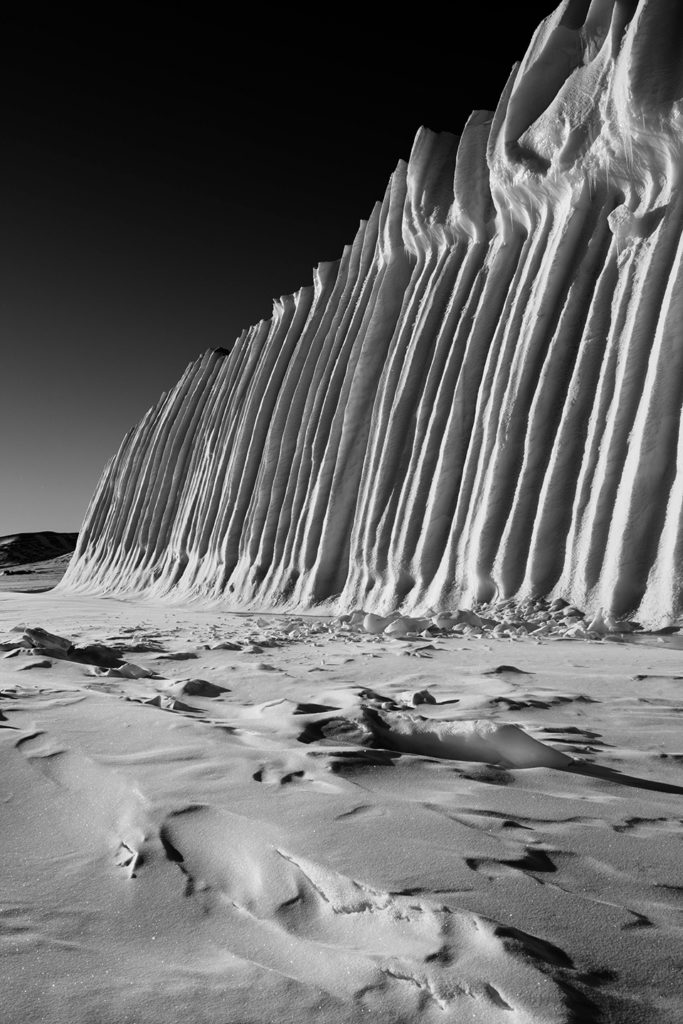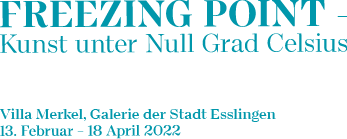Fridolin Walcher
Fotografien, 2018
Als Natur- und Reportagefotograf in der Schweiz beobachtet Fridolin Walcher (*1951) seit Jahrzehnten die stetige Veränderung der Alpenlandschaften. Im Mai 2018 ist er außerdem als Teil einer Gruppe von WissenschaftlerInnen, WirtschaftsvertreterInnen und DiplomatInnen nach Grönland gereist. Die Gruppe war dazu eingeladen, die zwei arktischen Forschungsstationen der Schweiz, Swiss Camp und East GRIP zu besuchen. Sie reisten weit über die Zivilisationsgrenze zum Humboldt- und zum Petermanngletscher bis zum 81. nördlichen Breitengrad.
Neben eindrucksvollen Fotografien, die die Weite und Größe der Polarlandschaft unter anderem im unwirklichen Licht der Mitternachtssonne zeigen oder den Lebensalltag der Inuit dokumentieren, experimentiert Fridolin Walcher bei seinen Naturfotografien mit unterschiedlichen Materialien wie Kohlepigment oder Japanpapier. Im direkten Vergleich von schweizer und arktischen Gletscherlandschaften im Detail werden ähnliche Schmelzprozesse sichtbar. Immer stärker treten Geröll- und Felslandschaft, festgehalten im kräftigen Schwarz des Kohlepigments, an die Stelle der Eislandschaften. Fotografien von vermeintlich „ewigem“ Eis erhält auf fragilem Japanpapier hingegen eine ganz eigene Fragilität.

Photographs, 2018
As a nature- and reportage-photographer in Switzerland, Fridolin Walcher (*1951) has been observing the constant changes in the Alpine landscape for decades. Moreover, in May 2018 he traveled to Greenland as part of a group of scientists, business representatives and diplomats. The group had been invited to visit two Arctic research stations operated by Switzerland: Swiss Camp and East GRIP. They journeyed far past the civilisation border all the
way to the Humboldt and Petermann glaciers as far north as the 81st latitude.
In addition to impressive photographs which present, among other things, the breadth and vastness of the polar landscape in the surreal light of the midnight sun or which document the everyday life of the Inuit, Fridolin Walcher experiments in his photographs of nature with various materials such as carbon pigment or Japanese tissue paper. In the direct and detailed comparison of Swiss and Arctic glacier landscapes, similar melting processes become visible. With increasing frequency, landscapes of stone and pebbly debris, recorded in the vigorous black of the carbon pigment, come to replace the frozen landscapes. On the other hand, photographs of supposedly ‘everlasting’ ice on delicate Japanese tissue paper acquire a fragility of their very own.
